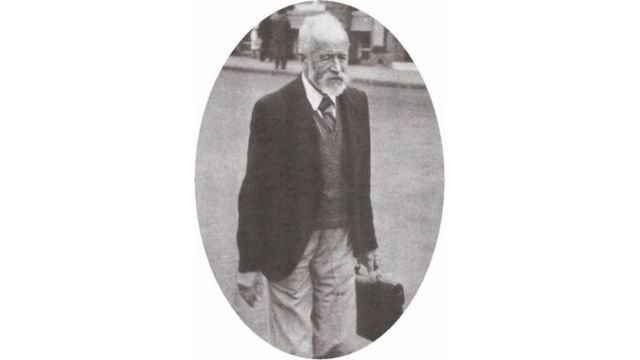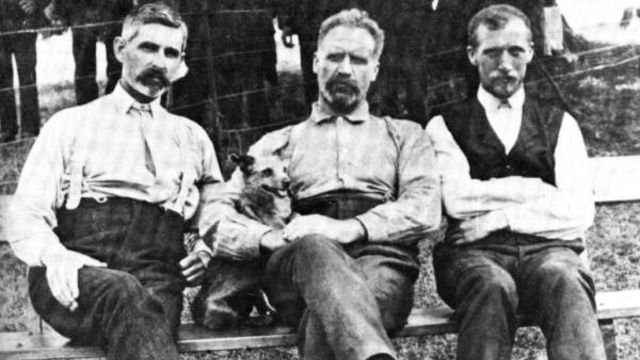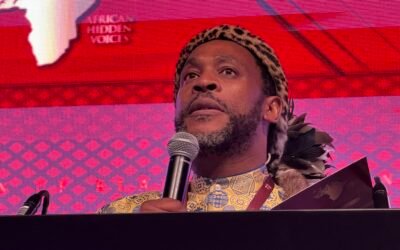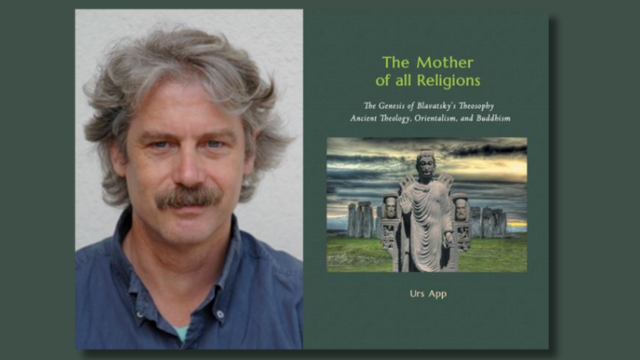As members of the secretive movement are in the news accused of sexual abuse, we publish a translation of an encyclopedia entry by the late Italian scholar PierLuigi Zoccatelli, clarifying who they are.
by PierLuigi Zoccatelli (†)

The “Two-by-Twos” (“Two-by-Twos”) or “The Truth Movement,” or “Workers,” are an idiosyncratic part of independent Protestant fundamentalism.
At the origins of the movement was, with others, William Irvine (1863–1947), a Scotsman who became one of the leaders in Ireland of the fundamentalist Faith Mission movement of John George Govan (1861–1927). Govan’s daughter Sheena (1912–1967) will later be among the founders of a very different group of English followers of Theosophist Alice Bailey (1880–1949). Sheena’s group is at the origins of the Findhorn community, which is in turn important for the history of the New Age phenomenon.
Irvine separated from Govan’s Faith Mission with a group of followers between 1897 and 1901. In 1903, Irvine asked his followers, both male and female, to give up all their possessions, live in chastity and poverty, and go two by two to the world spreading a church whose members will have no other name than “Christians.” Followers set out for Australia and New Zealand (where success was particularly notable), South Africa, China, continental Europe, and North and South America.
Those in Irvine’s tradition—nicknamed “Two-by-Twos,” a name they reject just as they reject any other name—do not build churches or chapels, ordain ministers or pastors, or print books or doctrinal pamphlets, relying only on the Bible, hymns, and oral preaching.
Irvine announced apocalyptic events for the year 1914. When the prophecy failed, his role as “general overseer” of the movement was disputed. Eventually, the overseers of the various geographical areas, who preferred a collegial management, excluded him from the very movement he had founded.
Irvine then retired to Jerusalem with a small number of followers. Among his collaborators one of the most active, Edward Cooney (1867–1960), is at the origin of one of the names by which the movement is known— “Cooneyites.” However, Cooney too broke with Irvine after a few years, and the name “Cooneyites” should better be reserved for those who regard his preaching and writings as authoritative (a subgroup mostly present in Australia).

The largest or main branch followed the regional overseers after the break with Irvine. They may have, according to different observers, from a mere 10,000 (also due to a decline in recent years) to as much as 500,000 members throughout the world. Estimates are difficult because the most salient characteristic of the group is secrecy.
Much smaller are the other two branches, which followed respectively Irvine after the break with the regional overseers, and Cooney after the break with Irvine. There is a hierarchy, but the names of the leaders are not disclosed to non-members. There are no places of worship and meetings are held in private homes. One of the few books printed by the movement and available in public libraries (including CESNUR’s) is a collection of hymns, from which a fundamentalist theology emerges.
There is no shortage of books and websites by critics and former members, however, who have pointed to sermons by ministers of the movement that would drift beyond Protestant orthodoxy. Some of these sermons, in particular, would deny the Trinity and the divinity of Jesus, considered a mere outstanding human being who demonstrated a complete obedience to God.
The Two-by-Twos, however, are united more by their way of life than by their theology. Women do not use cosmetics or jewelry (except the wedding ring); the use of television is discouraged. In addition to the weekly Lord’s Supper, the faithful participate in an annual “conventions” held in each of the “zones,” normally in a farmhouse or farm, without any form of publicity. The faithful are also called upon to support the “two” (both male and female) who visit their area, animate the meetings, and try to spread the movement to new towns. These full-time missionaries renounce marriage and receive no salary but are maintained by the offerings of the faithful in each of the areas they visit.

In Italy the main branch of the “Two-by-Twos”—who, like everywhere else, prefer not to use a specific name but are sometimes known as “i Mandati” (the Envoys)—has been present since 1924, when the first missionaries, Scotsman Alexander “Sandy” Scott (1886–1968) and Irishman Robert Marshall (1899–1961), converted a group of eight Italians in Picciano (Pescara), where the Italian conventions were to be held for forty-four years. In 1948, Scott led a mission in Carema (37 miles north of Turin). Female missionaries were also sent to Italy, considering that most converts were women. Presences were established in other areas of Italy too.
The apostolate is conducted through “tents” or meetings in private premises. Once or twice a year conventions are held in Italy, in which Swiss members also participate. In Carema and Petacciato (Campobasso), an average of 470 and 200 people respectively attended in the 2000s.

PierLuigi Zoccatelli (1965-2024) taught Sociology of Religions at Pontifical Salesian University, Torino, and Sociology of Esotericism at the University of Turin. He was deputy director of CESNUR, the Center for Studies on New Religions, and the associate editor of The Journal of CESNUR. Among other affiliations, he was a member of the scientific committee of the Interdepartmental Center for Research in Religious Sciences “Erik Peterson” (CSR) of the University of Turin, and of Contemporary Religions And Faiths in Transition (CRAFT), a research center of the Department of Cultures, Politics and Societies of the University of Turin. He was also a member of the section “Sociology of Religion” of the Italian Sociology Association (AIS), and of the European Society for the Study of Western Esotericism (ESSWE). He is the author of several books and articles in the field of New Religious Movements and Western Esotericism, and co-director of the widely reviewed Encyclopedia of Religions in Italy. His writings has appeared in 12 countries and in 8 languages.



